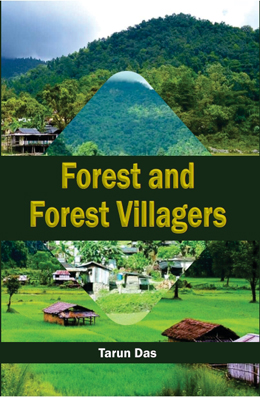
In this book, all socio-economic aspects of forest villagers’ have been discussed critically, based on the information collected from the study field as the report is a critical assessment of the situation. However, the entire writings are grouped into nine chapters to find out actual situation which prevailing among forest villagers. The book provided background and the existing situation giving an evident idea about the forest villagers’ residing different altitude in same forest environment. Further, the descriptions of major events of forest villagers’ life in respect to the forest and forest resource utilization have been analyzed. Besides, it had main thrust to examine the villagers’ relation with forest and their perception of problems associated with forest as well as suggestion have been included to relieve the problems of forest villagers. In the chapter 1, the writer describes the details of methodology and what to be researched from forest villagers’ who live in forest of same environment. The analysis of first chapter has been done on the basis of primary as well as secondary level data. Chapter 2 contains of the details of geographical status of the Alipurduar District. Here details of administrative setup, relief, water bodies, climatic characteristics, soil, natural vegetation, details of demographic picture of the study area and economy has been described. Chapter 3 describes the details of forest status as well as forest villagers’ panorama. Here administrative setup of forest divisions, area coverage, forest resource product and utilisation, and important aspects of the forest villagers’ life and culture has been depicted. Chapter 4 gives the details of field observations related information of demography as well as socio-economy of villagers of forest. Here demographic character such as age-sex composition, ethnic composition, dominant tribal group, family size and type, and migration; and social aspects such as language, educational status, religions and beliefs, and marital status have been depicted diligently. Chapter 5 is an elaborate analysis of various adaptation sides of sampled forest villagers. The site and location of forest villagers has a profound impact on the life style which they have to adapt according to their capacity. Chapter 6 describes the details of forest villagers’ dependency on forests. Here the effort has been made to show the details of collection of forest resources such consumption of Non-Timber Forest Product (NTFPs), fodder, timber, fuel wood as well as time spent and distanced covered for collection of these resources. Chapter 7 gives details of field observations related information of perception of villagers’ as well as environment related views which also connected with villagers’ socio-economic livelihood entities. In the chapter 8, the writer describes the details about key issues and supporting activities such as of FPCs and EDCs members in JFM, ecological, economic and social activity of JFM project of Joint Forest Management project in Alipurduar District, West Bengal. The chapter 9, which is conclusion, all these have been critically assessed and what to be done for betterment of forest villagers has been suggested. All these given suggestions might be helpful to the social workers, project planners, social scientists and others who involved directly or indirectly for causes of the sustainable development of the forest villagers.
| Weight | 0.900 Gm. |
|---|---|
| Year | 2022 |
| Pages | 464 |
| Edition | Hard Bound |
| Author Name | Tarun Das |
| About the Authors | Dr. Tarun Das, born in 1979 at Uttar Dinajpur district, West Bengal. Dr. Das received his school education from native place and had his B.A Honours in Geography (1998) from Siliguri College, WB. He passed M.A/ M.Sc in Geography (2000-01) from the Department of Geography and Applied Geography, University of North Bengal and received B.Ed degree from Malda Govt. Teachers’ Training College, Malda, WB. He has completed M.Phil from VMRF, Salem also awarded PhD in Geography from the Department of Geography and Applied Geography, University of North Bengal. Dr. Das presently engaged as an Assistant Professor in the Department of Geography, Siliguri College, Siliguri, Dist. Darjeeling, West Bengal. He was also appointed as an Assistant Professor in the Department of Geography, Birpara College, Dist. Alipurduar, West Bengal from 2010 to 2017. He has been involved in teaching profession at high school level since 2002. He edited two volumes, ‘Population, Urbanisation and Changing State of Environment,’ in 2014 and ‘Human interventions: Present and Future State of Environment’ in 2016. He has successfully completed a minor research project sponsored by UGC entitled ‘Sustainable livelihood of forest dwellers through Joint Forest Management (JFM) in Jalpaiguri district’ in 2017. His main interest of research area is on Environmental problems and related issues, Urbanisation and Population problem related issues as well as on Regional Planning and rural Development issues. He has contributed a number of research papers on Forests and Environment related issues of Duars area of West Bengal which are published in different edited books, reputed national and international journals, also presented a number of research papers in various national and international Seminars/ Conferences on Environment, Forest as well as Population related issues. Beside presently guiding Ph.D scholars of the Department of Geography and Applied Geography, University of North Bengal. |